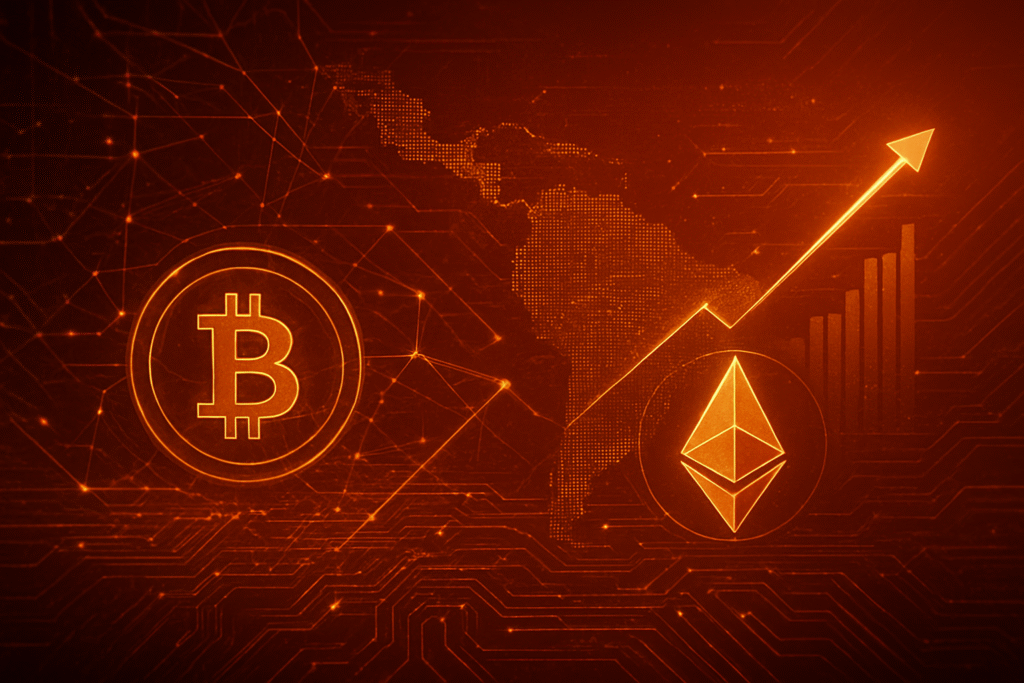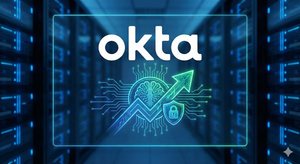
Buenos Aires, Argentina – October 28, 2025 – Latin America has officially emerged as the global leader in cryptocurrency adoption and growth, a groundbreaking development highlighted in the recently released "LATAM Crypto Regulation Report 2025" by Coinchange. The comprehensive study, published today, reveals that crypto usage in the region surged by an astonishing 63% year-over-year between mid-2024 and mid-2025, surpassing all other global markets. This rapid expansion, driven by acute economic necessities and a proactive embrace of digital innovation, is not merely a regional phenomenon but a significant catalyst reshaping the global crypto landscape.
The report's findings immediately underscore Latin America's pivotal role in demonstrating the real-world utility of cryptocurrencies. From providing a vital hedge against rampant inflation and volatile local currencies to facilitating cost-effective cross-border remittances and offering financial inclusion to millions of unbanked citizens, crypto has transitioned from a speculative asset to an essential financial tool across the continent. This utility-driven adoption sets a powerful precedent, influencing regulatory discussions and investment strategies worldwide, and solidifying the region's position as a blueprint for future global crypto integration.
Market Impact and Price Action
The explosive growth in Latin America is translating directly into robust market activity, signaling a maturing and increasingly liquid ecosystem. According to the Coinchange report, the region recorded over $1.5 trillion in on-chain transaction volume between July 2022 and June 2025. Monthly crypto trading volumes surpassed $3 billion in 2025, nearing the peaks observed during the 2021 bull run, with specific fiat markets like the Argentine Peso (ARS) and Brazilian Real (BRL) experiencing the fastest growth. Between January and May 2025, volumes reached an impressive $16.2 billion, marking a 42% increase from 2024.
Stablecoins, particularly USD-pegged tokens like USDT and USDC, are the undisputed backbone of this market surge. In Brazil, stablecoins constitute up to 90% of crypto transaction flows, while in Venezuela, they account for 34% of retail payments—the highest share in Latin America. These "digital dollars" offer crucial stability in economies plagued by high inflation and currency devaluation, positioning them as essential tools for daily transactions, savings, and remittances. This utility-first approach fosters a more resilient market sentiment, less susceptible to purely speculative swings, and contributes to enhanced liquidity across various digital assets. Centralized exchanges (CEXs) remain the primary gateway, capturing 64% of regional activity, notably higher than North America (49%) and Europe (53%), indicating a preference for accessible and regulated on-ramps.
While Latin America's crypto boom is distinct, it echoes past periods of rapid adoption in emerging markets where economic instability drove populations towards alternative financial solutions. However, the region's current growth is unique due to the widespread, utility-driven adoption of stablecoins for everyday financial needs, rather than a primary focus on volatile assets like Bitcoin (BTC-USD) for speculative gains. This contrasts with earlier crypto cycles and even El Salvador's pioneering but challenging decision to adopt Bitcoin as legal tender in 2021, which faced hurdles due to the asset's volatility. The Latin American model emphasizes practical solutions, positioning the region as a leader in crypto integration for real-world financial challenges.
Community and Ecosystem Response
The groundswell of crypto adoption in Latin America has ignited a vibrant and highly engaged community and ecosystem, characterized by a focus on education, utility, and financial empowerment. Social media sentiment surrounding crypto in the region is overwhelmingly positive, with discussions frequently highlighting the transformative potential of digital assets to address real-world economic pain points. Crypto influencers and thought leaders play a crucial role, with figures like Mauricio Tovar, Cristobal Pereira, and Lorena Ortiz actively providing market analysis, educational content, and insights into crypto fundamentals, helping to onboard new users and foster informed decision-making.
The region's DeFi protocols are experiencing significant expansion, driven by the demand for financial inclusion and alternatives to traditional banking. Innovative solutions are emerging, such as Uphold’s partnership with Exactly Protocol, which is launching instant crypto loans via Visa (NYSE: V) cards, allowing users to borrow against assets like XRP, ETH, and stablecoins without traditional credit checks. This service, expected to expand across Latin America by December 2025, aims to democratize financial access. The Latin American blockchain technology market is projected to reach $7.93 billion by 2032, with DeFi platforms alone anticipated to exceed $18.3 billion by 2030. Projects like PayDax are also building peer-to-peer lending structures, leveraging cryptocurrencies and tokenized real-world assets.
The NFT and Web3 ecosystems are also burgeoning, albeit with a strong emphasis on real-world applications and community building. Carnaval, a Latin American NFT marketplace, is promoting Iberoamerican artists by combining physical and digital art on Bitcoin. Solana's (SOL-USD) NFT ecosystem is gaining traction, supporting digital artists and facilitating fast, affordable digital asset transfers. Web3 applications are being developed to address inflationary challenges and the need for decentralized solutions, with initiatives like CryptoConexión and DeFinomics Labs focusing on education and talent onboarding. WAGMI LATAM aims to increase women's participation in Web3, targeting 5 million Latin American women by 2030. The broader sentiment across Crypto Twitter and Reddit acknowledges Latin America's organic, utility-driven growth, often citing its efficiency for remittances and as a hedge against local currency depreciation.
What's Next for Crypto
Latin America's trajectory as the world's fastest-growing crypto market in 2025 signals profound short and long-term implications for the global crypto landscape. In the short term (2025-2026), the region is poised for continued stablecoin dominance, with monthly transaction volumes expected to sustain their upward trend. Increased institutional participation is anticipated, driven by clearer regulatory environments in leading countries like Brazil, which saw $961 million in venture funding for blockchain startups in Q2 2025 alone. The evolving regulatory landscape, with ten countries implementing frameworks or pilot programs, will provide further clarity and foster greater confidence.
Looking further ahead, Latin America is projected to experience a 10.93% Compound Annual Growth Rate (CAGR) through 2033, with user penetration reaching 16.65% by 2026. The DeFi sector alone is expected to exceed $18.3 billion by 2030, indicating a future of regulation-backed, sustained growth. The tokenization of real-world assets (RWAs) is also gaining significant traction, potentially reaching $50 billion in 2025, as projects seek to cut capital market costs and shorten listing times.
Several catalysts are fueling this momentum: persistent economic instability and hyperinflation in countries like Argentina and Venezuela drive millions to stablecoins. The region's over $150 billion in annual remittances finds a significantly cheaper and faster alternative in crypto, with cross-border crypto remittances growing 40% between mid-2024 and mid-2025. High mobile and internet penetration, coupled with advanced digital payment systems like Brazil's PIX and the development of CBDCs such as Drex, create fertile ground for adoption.
Key developments to watch include the ongoing refinement of regulatory frameworks, particularly Brazil's comprehensive Law 14.478/2022 and its Drex CBDC pilot involving major players like Visa (NYSE: V) and Mastercard (NYSE: MA). Argentina's mandatory registration for crypto exchanges and recognition of Bitcoin for international trade in 2025, alongside Colombia's real-time reporting requirements, highlight a regional push for oversight. Institutional engagement, exemplified by BlackRock's (NYSE: BLK) spot BTC ETF in Brazil and Itaú Unibanco (NYSE: ITUB) offering crypto services, will further legitimize the market. Strategic considerations for projects and investors include prioritizing utility, navigating fragmented regulations, localizing offerings, enhancing security, and fostering institutional partnerships. While continued strong growth with maturing regulation is highly likely, potential scenarios range from an optimistic acceleration of institutional integration to challenging setbacks due to regulatory fragmentation or security breaches.
Bottom Line
Latin America's ascendance as the world's fastest-growing crypto market in 2025 represents a seismic shift in the global financial landscape. For crypto investors and enthusiasts, the key takeaway is the region's robust, necessity-driven adoption, particularly of stablecoins, which serve as a critical hedge against inflation and a practical tool for everyday transactions and remittances. The market's significant scale, evidenced by over $1.5 trillion in on-chain transaction volume and substantial venture funding, underscores its maturity and potential for sustained expansion. The evolving regulatory environment, led by Brazil's progressive framework, is crucial for fostering institutional confidence and attracting further investment.
The long-term significance of this trend cannot be overstated. Latin America is not merely adopting crypto; it is integrating it into the fundamental fabric of its economies, demonstrating its profound real-world applications beyond speculation. This model could serve as a blueprint for other developing economies facing similar financial challenges, accelerating global crypto adoption. While challenges such as infrastructure development, consumer education, and consistent oversight remain, the region's momentum signifies a broader movement towards financial sovereignty and technological empowerment. Global crypto companies that underestimate Latin America risk being left behind in one of the most dynamic fintech revolutions of our time.
Important dates, events, and metrics to monitor include the continued year-over-year growth in crypto usage (63% between mid-2024 and mid-2025), total on-chain transaction volume ($1.5 trillion between July 2022 and June 2025), and user adoption rates (57.7 million, or 12.1% of the population, as of early 2025). Keep a close watch on stablecoin transaction volumes, particularly in Brazil and Venezuela, and the growth of crypto remittances. Regulatory developments, especially Brazil's further rules expected by the end of 2025, and the progress of CBDC pilots like Brazil's Drex, will be critical indicators. Finally, major events such as the Ethereum Foundation's Devconnect in Buenos Aires (November 17-22, 2025) and the Merge Buenos Aires conference (late March 2025) highlight the region's increasing prominence in the global crypto community.
This article is for informational purposes only and does not constitute financial or investment advice. Cryptocurrency investments carry significant risk.





